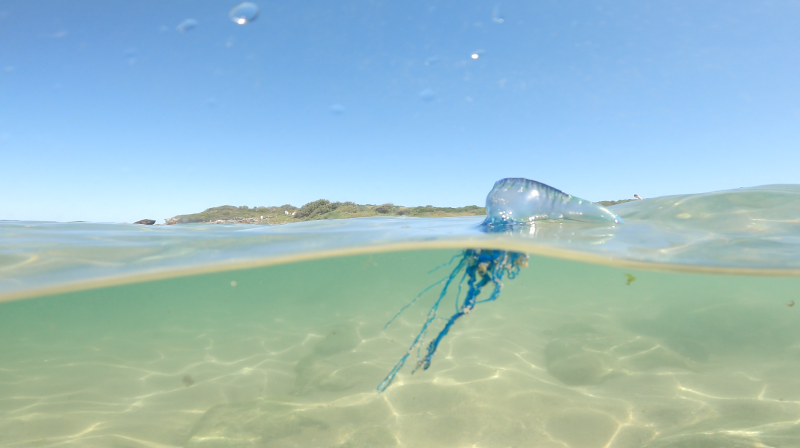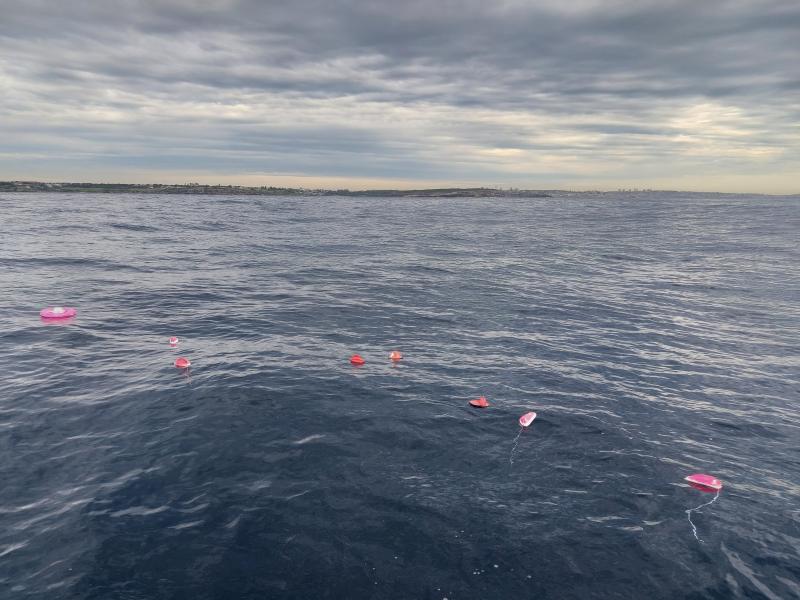As part of an international project funded by theAustralian Research Council supported by the University of New South Wales, Sydney, a team from MIO (UTLN) and OSU Pytheas was involved in an offshore campaign off the Australian coast at the end of January 2024.
The project Bluebottle Watch is interested in the dynamics of Physalia physalis (known as 'bluebottles' in Australia), a colony made up of thousands of functionally specialised (float, tentacles, feeding and reproductive polyps) and interdependent individuals. The regular mass strandings of bluebottles on Australian coasts and the painful stings suffered by bathers justify this study.
The aim of the project is to understand the transport and stranding dynamics of Bluebottles, which are mainly forced by wind, currents and waves, from an experimental and theoretical point of view, in order to make predictions for the future and alert the public.
As part of Natacha Bourg's thesis, supervised by Anne Molcard (MIO-Université de Toulon) and Amandine Schaeffer (UNSW), models printed from 3D scans of real Bluebottles were tested in the Luminy wind tunnel (LASIF), with essential technical support from Rémi Chemin (UTLN) and Christopher Luneau (CNRS). The model, made of ABS and silicone, had to meet three essential criteria: shape, balance and buoyancy.
The impact of wind intensity on the speed and trajectory of Bluebottles of different shapes (left-handed, right-handed, short or low sails) was studied and led to an initial experimental result in line with previous studies: the Bluebottle sails at an angle that decreases with wind intensity (to the right of the wind if left-handed and vice versa).
The next step was to be able to test these models in real-life conditions.
A second group of Bluebottles, printed and equipped with GPS and satellite communication systems, was built. The Bluebottles were transported to Sydney and deployed at sea.
Conditions at sea varied greatly from one day to the next, and from one day to the next, which meant that the Bluebottles could be released repeatedly in different weather and sea conditions.
All the printed models were recovered, either at sea or after being washed ashore.
The phase of analysing these observations is just beginning, with the aim of proposing a Lagrangian model of Bluebottle movement, in terms of speed and direction, as a function of wind and currents. This module can then be integrated into ocean circulation models to understand the origin of the Bluebottles. The team plans to repeat the experiments in the wind tunnel, as well as in the Mediterranean Sea, using the same Bluebottles models that have returned to the MIO premises.
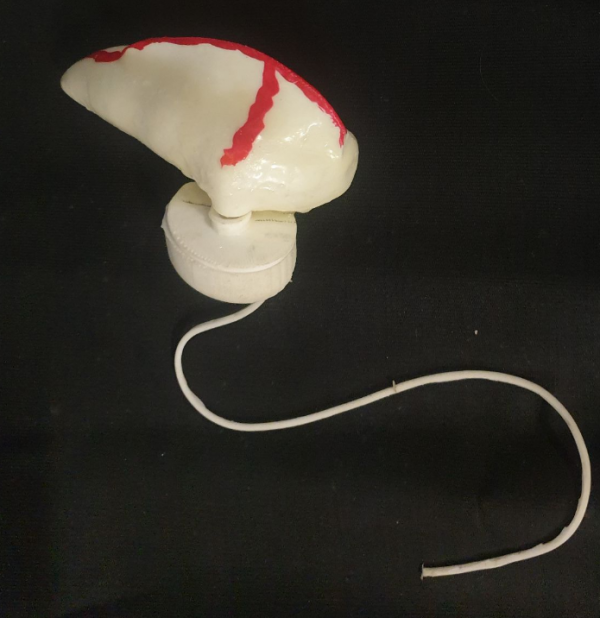 |
| Bluebottles models printed from 3D scans |
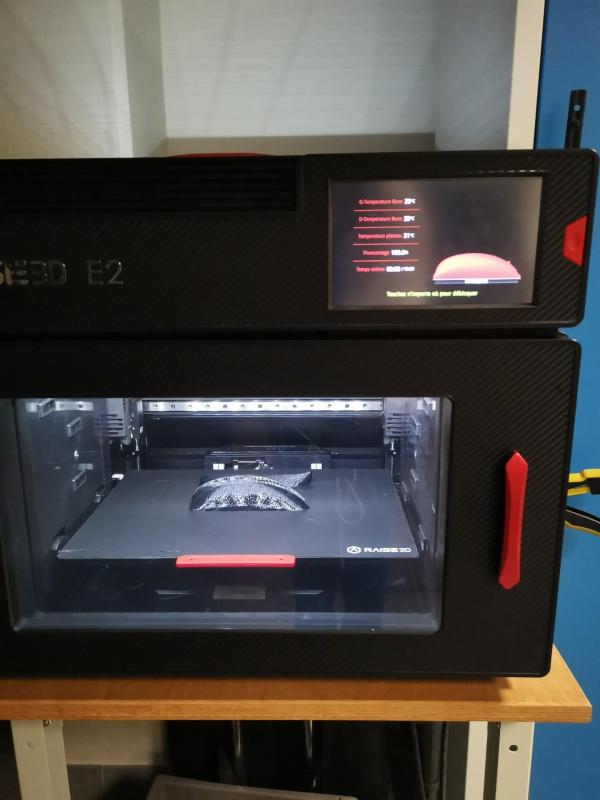 |
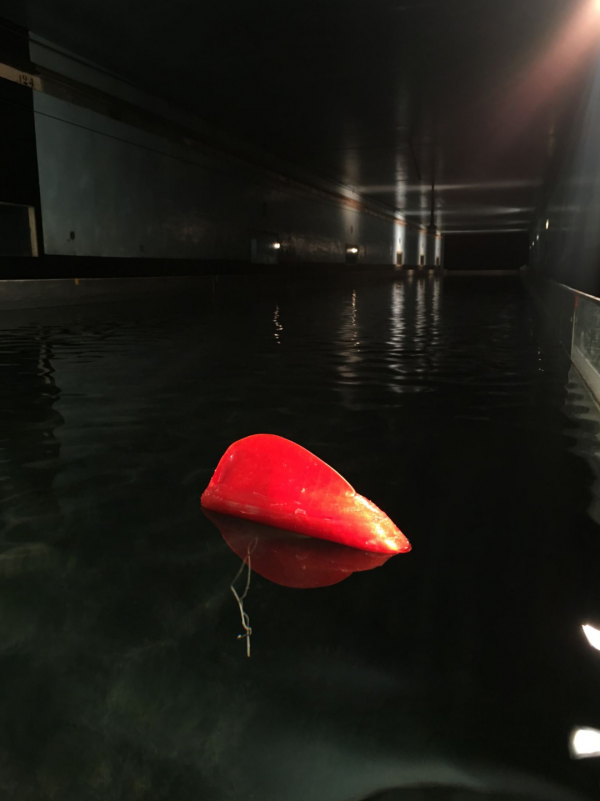 |
| First experimental result: the Bluebottle sails at an angle that decreases with the intensity of the wind (to the right of the wind if left-handed and vice versa). |
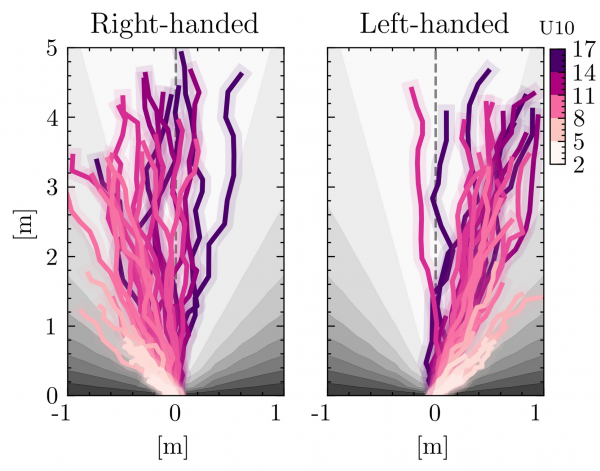 |





